-
 Bitcoin
Bitcoin $82,099.5826
-1.34% -
 Ethereum
Ethereum $1,817.9545
-1.07% -
 Tether USDt
Tether USDt $0.9999
0.02% -
 XRP
XRP $2.0815
-3.96% -
 BNB
BNB $595.8647
-1.53% -
 Solana
Solana $124.0327
-0.92% -
 USDC
USDC $1.0000
0.01% -
 Dogecoin
Dogecoin $0.1634
-3.94% -
 Cardano
Cardano $0.6445
-4.65% -
 TRON
TRON $0.2336
1.34% -
 Toncoin
Toncoin $3.9381
2.61% -
 Chainlink
Chainlink $13.2201
-3.75% -
 UNUS SED LEO
UNUS SED LEO $9.0947
-5.84% -
 Stellar
Stellar $0.2646
-1.90% -
 Avalanche
Avalanche $18.6234
-3.91% -
 Shiba Inu
Shiba Inu $0.0...01214
-3.88% -
 Sui
Sui $2.2126
-6.78% -
 Hedera
Hedera $0.1604
-6.61% -
 Polkadot
Polkadot $4.0237
-1.97% -
 Litecoin
Litecoin $82.1655
-4.48% -
 MANTRA
MANTRA $6.2849
-1.13% -
 Bitcoin Cash
Bitcoin Cash $298.8203
-2.66% -
 Dai
Dai $1.0000
0.02% -
 Bitget Token
Bitget Token $4.4293
-4.57% -
 Ethena USDe
Ethena USDe $1.0000
0.01% -
 Pi
Pi $0.6976
-9.77% -
 Hyperliquid
Hyperliquid $12.5853
-0.74% -
 Monero
Monero $215.4717
-0.22% -
 Uniswap
Uniswap $5.8825
-1.85% -
 Aptos
Aptos $5.1958
-2.29%
How do I view NFT assets in MetaMask?
MetaMask primarily manages crypto; viewing NFTs requires using the NFT marketplace or platform where they were purchased, ensuring your MetaMask is connected to the correct blockchain network.
Mar 24, 2025 at 09:42 pm
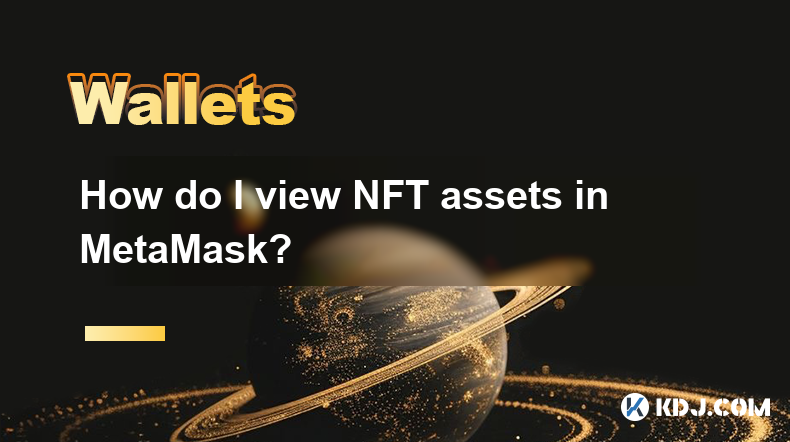
Key Points:
- MetaMask doesn't directly display all NFT assets; it depends on the NFT's location and the network it's on.
- You'll need to use compatible NFT marketplaces or explorers to fully visualize your NFTs.
- Understanding your wallet's network connection is crucial for viewing your assets.
- Different NFT standards (ERC-721, ERC-1155) might require different viewing methods.
How Do I View NFT Assets in MetaMask?
MetaMask, a popular Ethereum wallet, doesn't inherently display all your NFTs like a dedicated NFT gallery. Its primary function is managing your cryptocurrency and interacting with decentralized applications (dApps). Whether or not you can see your NFTs directly depends on several factors, primarily the blockchain network and the specific NFT marketplace or platform where your NFT resides.
If your NFTs are on the Ethereum mainnet or a compatible network that MetaMask supports, you might see a small indication of their presence. However, you won't get a detailed visual representation of the NFT artwork within the MetaMask interface itself. Instead, MetaMask will display the NFT's token ID and often a link to its location on the blockchain. Clicking this link will usually take you to a block explorer that shows basic details.
To actually see your NFT artwork, you'll typically need to use a third-party application. This is because the artwork isn't stored directly within the MetaMask wallet. Instead, a pointer to the location of the artwork is stored on the blockchain. This pointer is what allows you to verify ownership. Many NFT marketplaces and explorers offer this viewing functionality.
Let's break down the process depending on where your NFTs are held:
- NFTs on OpenSea: If your NFTs are from OpenSea, the most common NFT marketplace, you can often view them directly through OpenSea's website. After connecting your MetaMask wallet, OpenSea will access your wallet and display the NFTs you own. This method provides a full visual experience, including the artwork itself.
- NFTs on Other Marketplaces: Many other marketplaces exist, such as Rarible, Foundation, and SuperRare. Each platform usually has its own method for viewing your NFTs. Generally, you will need to connect your MetaMask wallet to the platform's website or application.
- NFTs on Other Blockchains: MetaMask supports various blockchains beyond Ethereum. However, the availability of NFT viewing features within MetaMask depends on the specific blockchain's compatibility and the NFT standard used (ERC-721, ERC-1155, etc.). You may need to use blockchain explorers or other wallet interfaces designed for that specific network.
To ensure you can view your NFTs, it's vital to confirm your MetaMask is connected to the correct network. For example, if your NFTs are on the Polygon network, you need to make sure MetaMask is switched to the Polygon network before attempting to view them. Failure to do so will prevent you from accessing them.
You'll also encounter different NFT standards. ERC-721 is the most common standard for single, unique NFTs, while ERC-1155 allows for multiple instances of the same NFT. The way you view these might differ slightly, depending on the platform and the metadata associated with each NFT.
Using blockchain explorers can be helpful in verifying ownership. These explorers provide a detailed record of all transactions on the blockchain, including NFT transfers. While they may not display the artwork directly, they show ownership history and other technical details.
Understanding the specific platform where your NFTs originate is crucial. Each platform has its own user interface and method for displaying NFTs. Always refer to the platform's help section or FAQ for detailed instructions on viewing your assets.
Frequently Asked Questions:
Q: Why can't I see my NFTs in MetaMask?
A: MetaMask primarily manages crypto transactions, not NFT display. You need to use the NFT marketplace or platform where you acquired the NFTs to see the artwork. Ensure your MetaMask is connected to the correct network.
Q: My MetaMask shows my NFTs, but only as token IDs. What's wrong?
A: MetaMask might show the token ID, representing ownership. You must use the relevant NFT marketplace or a block explorer to view the actual artwork.
Q: I have NFTs on different blockchains. How do I view them all?
A: You'll need to use the appropriate tools for each blockchain. MetaMask supports multiple networks, but the visualization of NFTs depends on the platform and network. Blockchain explorers can also be useful.
Q: What if I can't find my NFTs on any platform?
A: Carefully review your transaction history to confirm the platform you purchased them on. If you believe your NFTs are lost or stolen, contact the marketplace or exchange where you acquired them. Consider checking various blockchain explorers to track ownership.
Q: Are my NFTs safe in MetaMask?
A: MetaMask itself doesn't directly store your NFTs; it holds the keys to access them on the blockchain. Secure your MetaMask seed phrase, as losing it means losing access to your NFTs. Always use reputable platforms for NFT transactions.
Disclaimer:info@kdj.com
The information provided is not trading advice. kdj.com does not assume any responsibility for any investments made based on the information provided in this article. Cryptocurrencies are highly volatile and it is highly recommended that you invest with caution after thorough research!
If you believe that the content used on this website infringes your copyright, please contact us immediately (info@kdj.com) and we will delete it promptly.
- As Sui (SUI) Prepares to Unlock $151M, Coldware (COLD) Quietly Captures the Next Billion Users
- 2025-03-31 21:10:12
- Cryptocurrency investors are increasingly moving capital into stablecoins and tokenized real-world assets (RWAs)
- 2025-03-31 21:10:12
- Rexas Finance (RXS) Attracts Big-Money Investors From Dogecoin (DOGE) and Shiba Inu (SHIB)
- 2025-03-31 21:05:14
- The Resilience of Hyperliquid NFTs
- 2025-03-31 21:05:14
- Hut 8 Launches American Bitcoin, a New Bitcoin Mining Entity Co-founded by Eric Trump
- 2025-03-31 21:05:12
- Avalanche (AVAX) and Near Protocol (NEAR) Stumble as Panshibi (SHIBI) Emerges as the New Meme Coin Giant
- 2025-03-31 21:05:12
Related knowledge
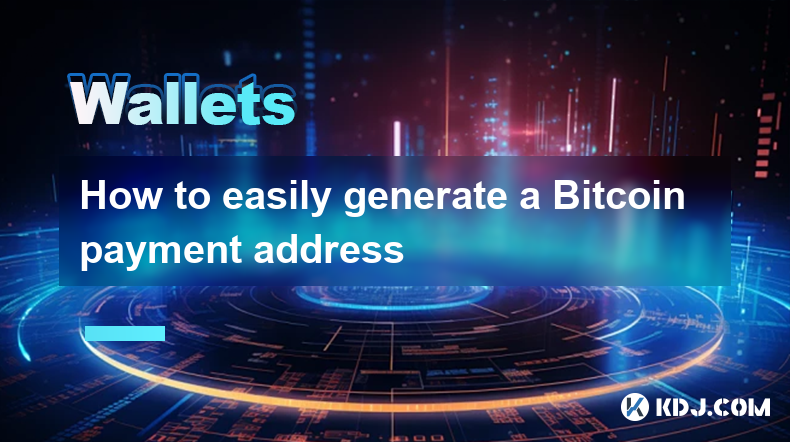
How to easily generate a Bitcoin payment address
Mar 29,2025 at 10:49am
Generating a Bitcoin payment address might seem daunting, but it's actually quite straightforward. This process is crucial for receiving Bitcoin, as each transaction requires a unique address. Understanding how this works is fundamental to using Bitcoin effectively. This guide will walk you through the simple steps, regardless of your technical experti...
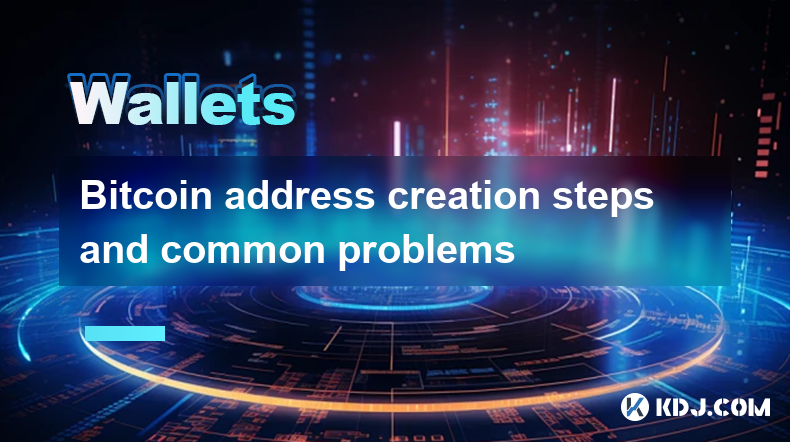
Bitcoin address creation steps and common problems
Mar 30,2025 at 06:07am
Understanding Bitcoin AddressesA Bitcoin address is a unique identifier, similar to a bank account number, used to receive Bitcoin. It's a string of alphanumeric characters generated from a public key, derived from your private key. Understanding the distinction between public and private keys is crucial for Bitcoin security. Your private key should be...
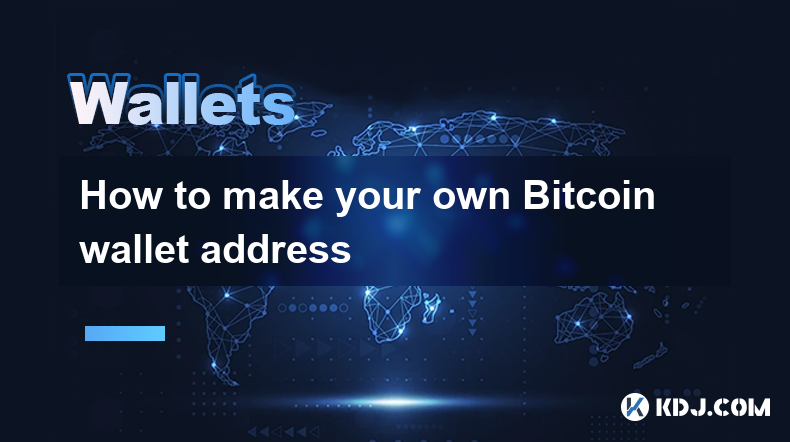
How to make your own Bitcoin wallet address
Mar 29,2025 at 08:42pm
Creating your own Bitcoin wallet address is crucial for securing and managing your Bitcoin holdings. It allows you to independently receive and send Bitcoin without relying on third-party services. This process involves understanding the different types of wallets and choosing the one that best suits your needs and technical expertise. Incorrectly gene...
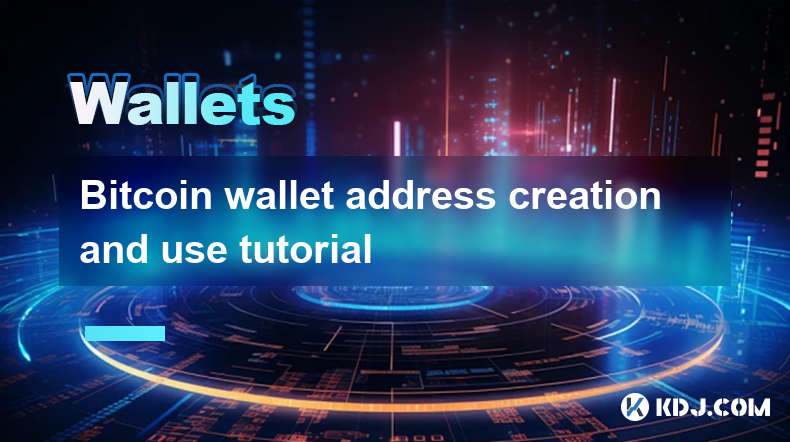
Bitcoin wallet address creation and use tutorial
Mar 29,2025 at 10:14pm
Understanding Bitcoin Wallet AddressesA Bitcoin wallet doesn't store Bitcoin in the way a traditional bank account does. Instead, it stores private keys, which are cryptographic secrets allowing you to access and spend your Bitcoin. Your Bitcoin address, on the other hand, is a public identifier, like an email address, that others can use to send you B...

Bitcoin address generation and secure storage guide
Mar 30,2025 at 08:07am
Understanding Bitcoin AddressesA Bitcoin address is essentially your public key, a string of alphanumeric characters used to receive Bitcoin. It's analogous to your bank account number. Unlike your private key, which is crucial for spending your Bitcoin, your address can be shared publicly without compromising your funds. Generating a new address is sim...
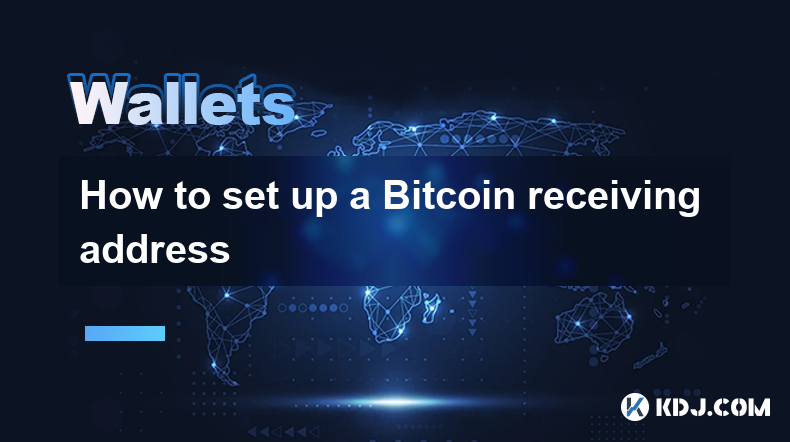
How to set up a Bitcoin receiving address
Mar 30,2025 at 06:14pm
Understanding Bitcoin Receiving AddressesA Bitcoin receiving address is essentially your unique identifier on the Bitcoin network. It's a string of alphanumeric characters that allows others to send Bitcoin to you. Think of it like your bank account number, but specifically for Bitcoin. You need a receiving address to receive Bitcoin. Crucially, you ca...

How to easily generate a Bitcoin payment address
Mar 29,2025 at 10:49am
Generating a Bitcoin payment address might seem daunting, but it's actually quite straightforward. This process is crucial for receiving Bitcoin, as each transaction requires a unique address. Understanding how this works is fundamental to using Bitcoin effectively. This guide will walk you through the simple steps, regardless of your technical experti...

Bitcoin address creation steps and common problems
Mar 30,2025 at 06:07am
Understanding Bitcoin AddressesA Bitcoin address is a unique identifier, similar to a bank account number, used to receive Bitcoin. It's a string of alphanumeric characters generated from a public key, derived from your private key. Understanding the distinction between public and private keys is crucial for Bitcoin security. Your private key should be...

How to make your own Bitcoin wallet address
Mar 29,2025 at 08:42pm
Creating your own Bitcoin wallet address is crucial for securing and managing your Bitcoin holdings. It allows you to independently receive and send Bitcoin without relying on third-party services. This process involves understanding the different types of wallets and choosing the one that best suits your needs and technical expertise. Incorrectly gene...

Bitcoin wallet address creation and use tutorial
Mar 29,2025 at 10:14pm
Understanding Bitcoin Wallet AddressesA Bitcoin wallet doesn't store Bitcoin in the way a traditional bank account does. Instead, it stores private keys, which are cryptographic secrets allowing you to access and spend your Bitcoin. Your Bitcoin address, on the other hand, is a public identifier, like an email address, that others can use to send you B...

Bitcoin address generation and secure storage guide
Mar 30,2025 at 08:07am
Understanding Bitcoin AddressesA Bitcoin address is essentially your public key, a string of alphanumeric characters used to receive Bitcoin. It's analogous to your bank account number. Unlike your private key, which is crucial for spending your Bitcoin, your address can be shared publicly without compromising your funds. Generating a new address is sim...

How to set up a Bitcoin receiving address
Mar 30,2025 at 06:14pm
Understanding Bitcoin Receiving AddressesA Bitcoin receiving address is essentially your unique identifier on the Bitcoin network. It's a string of alphanumeric characters that allows others to send Bitcoin to you. Think of it like your bank account number, but specifically for Bitcoin. You need a receiving address to receive Bitcoin. Crucially, you ca...
See all articles






















































































